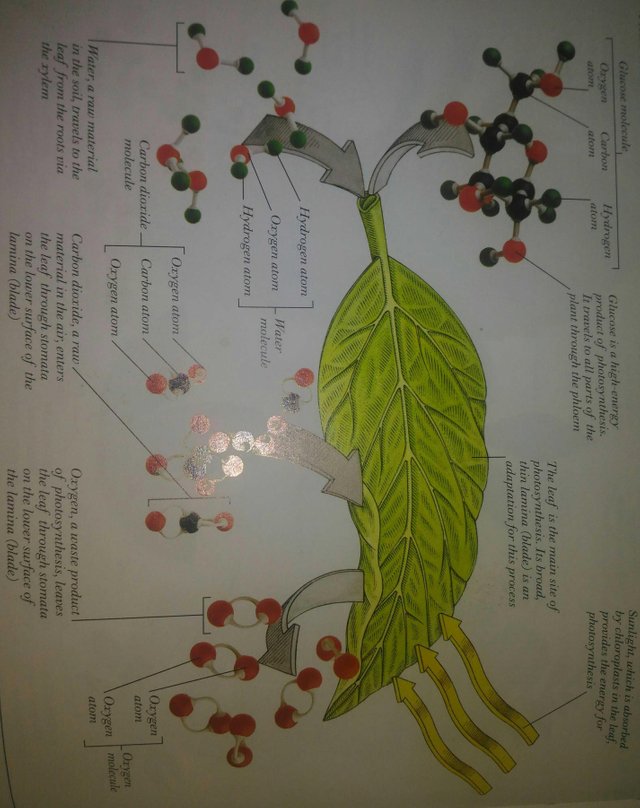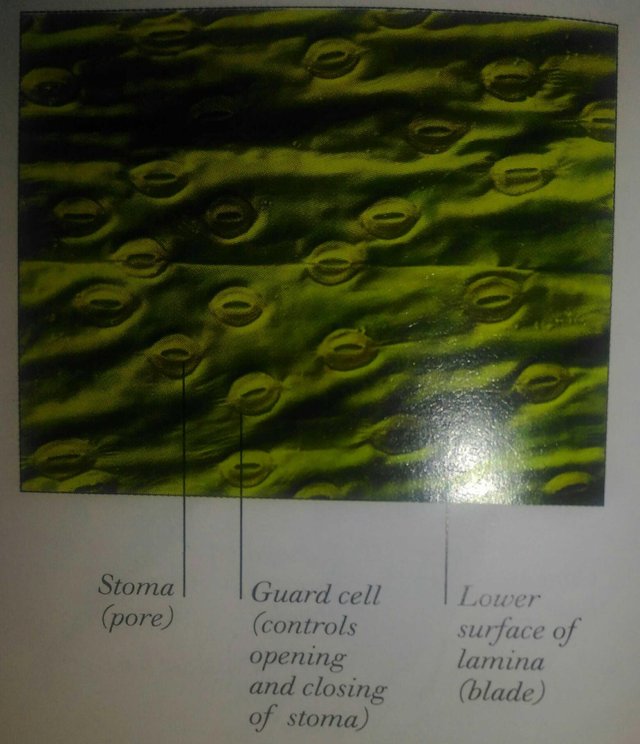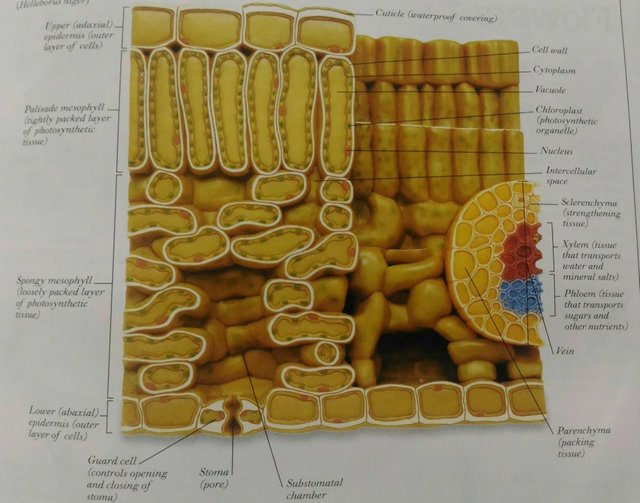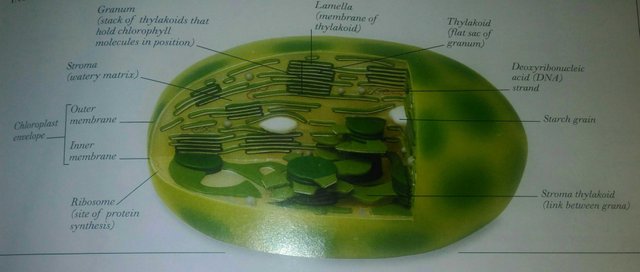PHOTOSYNTHESIS:

PHOTOSYNTHESIS IS THE PROCESS by which plants make their own food using sunlight, water, and carbon dioxide. It takes place inside special structures in leaf cells called chloroplast. The chloroplast contain chlorophyll, a green pigment that absorbs energy from sunlight. During photosynthesis, the absorbed energy is used to join together carbon dioxide and water to form sugar glucose, which is the energy source for the whole plant; oxygen, a waste product, is released into the air. Leaves are the main sites of photosynthesis, and have various adaptations for that purpose : flat laminae (blades) provide a large surface for absorbing sunlight; stomata(pores) in the lower surface of the lamanie allow gases (carbon dioxide and oxygen) to pass into and out of the leaves; and an extensive network of veins brings water into the leaves and transports the glucose produced by photosynthesis to the rest of the plants.
MICROGRAPH OF LEAF.

CROSS-SECTION THROUGH LEAF.

INTERNAL VIEW OF CHLOROPLAST.
